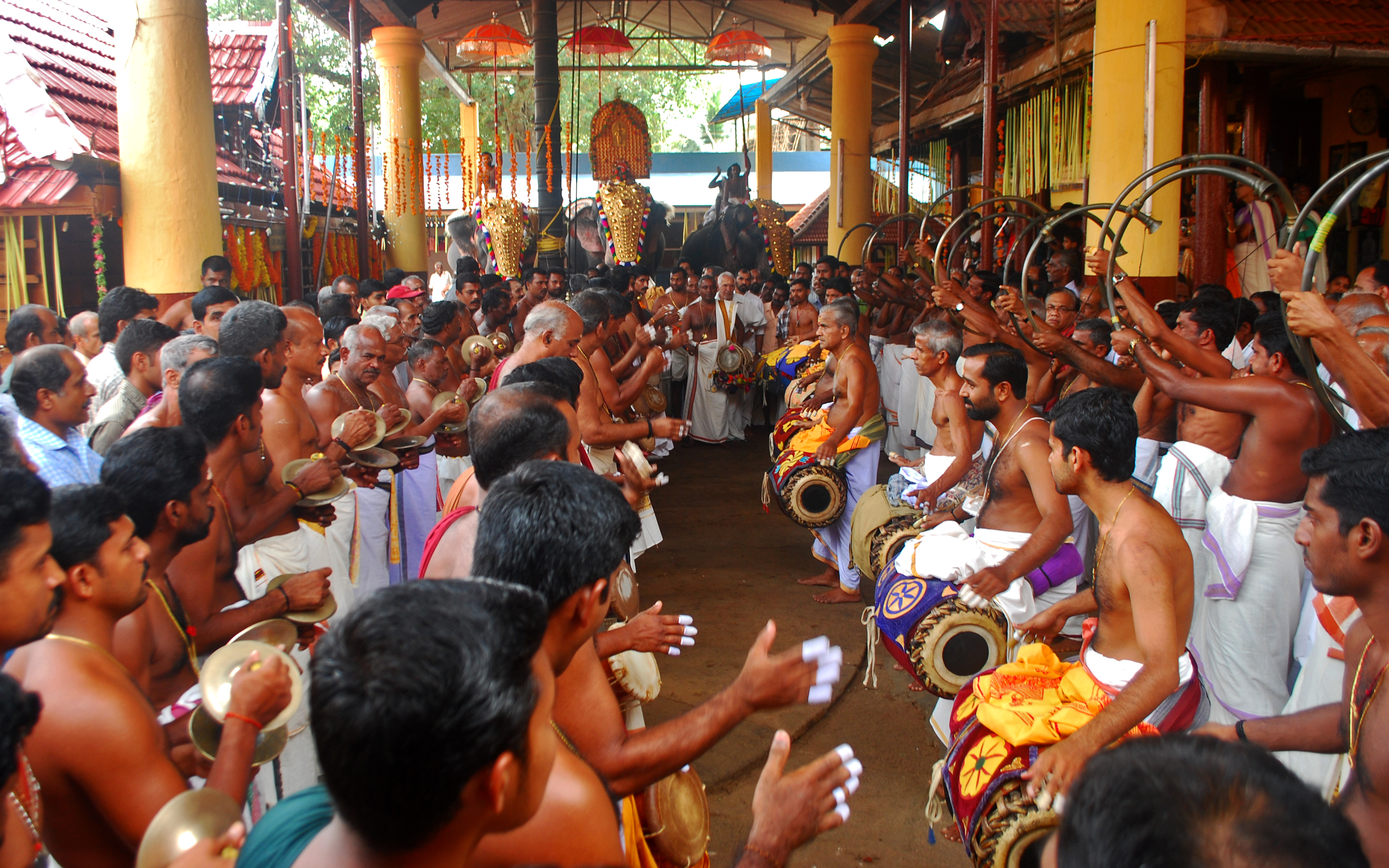Panchavadyam on:
[Wikipedia]
[Google]
[Amazon]
 Panchavadyam (
Panchavadyam (
 Panchavadyam (
Panchavadyam (Malayalam
Malayalam (; , ) is a Dravidian language spoken in the Indian state of Kerala and the union territories of Lakshadweep and Puducherry ( Mahé district) by the Malayali people. It is one of 22 scheduled languages of India. Malayalam wa ...
: പഞ്ചവാദ്യം), literally meaning an orchestra of five instruments, is basically a temple art form that has evolved in Kerala
Kerala ( ; ) is a state on the Malabar Coast of India. It was formed on 1 November 1956, following the passage of the States Reorganisation Act, by combining Malayalam-speaking regions of the erstwhile regions of Cochin, Malabar, South C ...
. Of the five instruments, four — timila, maddalam, ilathalam
Elathalam, or Ilathalam, is a metallic musical instrument which resembles a miniature pair of cymbals. This instrument from Kerala in southern India is completely made out of bronze and has two pieces in it.
Elathalam is played by keeping one pa ...
and idakka — belong to the percussion category, while the fifth, kombu, is a wind instrument.
Much like any chenda
The Chenda ( ml, ചെണ്ട, ) is a cylindrical percussion instrument originating in the state of Kerala and widely used in Tulu Nadu of Karnataka and Tamil Nadu in India. In Tulu Nadu (Coastal Karnataka), it is known as ''chende''. ...
melam, panchavadyam is characterised by a pyramid-like rhythmic structure with a constantly increasing tempo coupled with a proportional decrease in the number of beats in cycles. However, in contrast to a chenda melam, panchavadyam uses different instruments (though ilathalam and kompu are common to both), is not related very closely to any temple ritual and, most importantly, permits much personal improvisation while filling up the rhythmic beats on the timila, maddalam and idakka.
Panchavadyam bases itself on the seven-beat thripuda (also spelt thripuda) thaalam ( taal) but amusingly sticks to the pattern of the eight-beat chempata thaalam — at least until its last parts. Its pendulum beats in the first stage (pathikaalam) total 896, and halves itself with each stage, making it 448 in the second, 224 in the third, 112 in the fourth and 56 in the fifth. After this, panchavadyam has a relatively loose second half with as many stages, the pendulum beats of which would now scale down to 28, 14, 7, 3.5(three-and-a-half) and 1.
Whether panchavadyam is originally a feudal art is still a matter of debate among scholars, but its elaborate form in vogue today came into existence in the 1930s. It was primarily the brainchild of late maddalam artistes